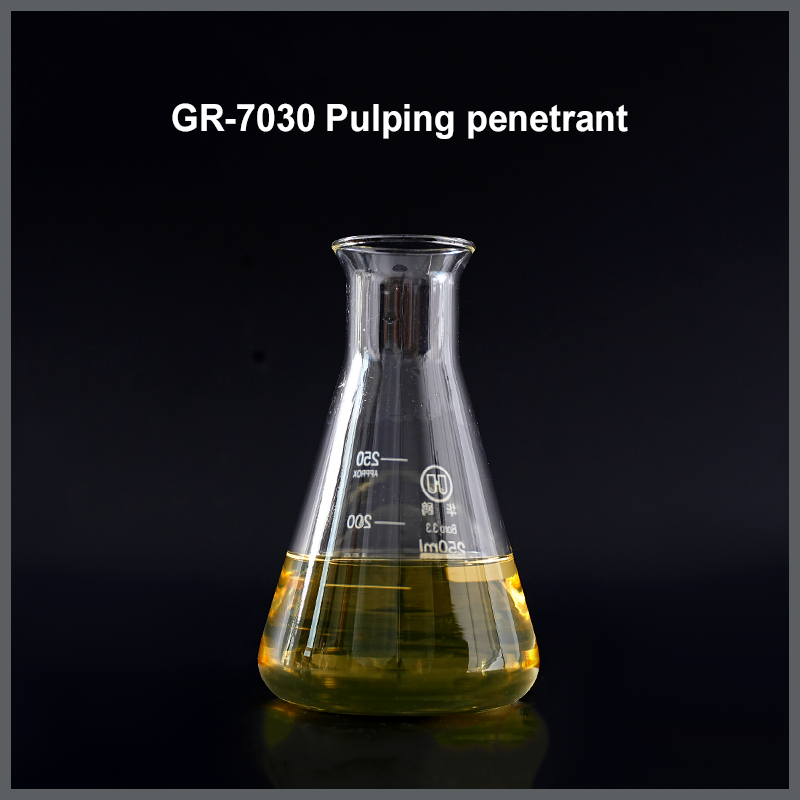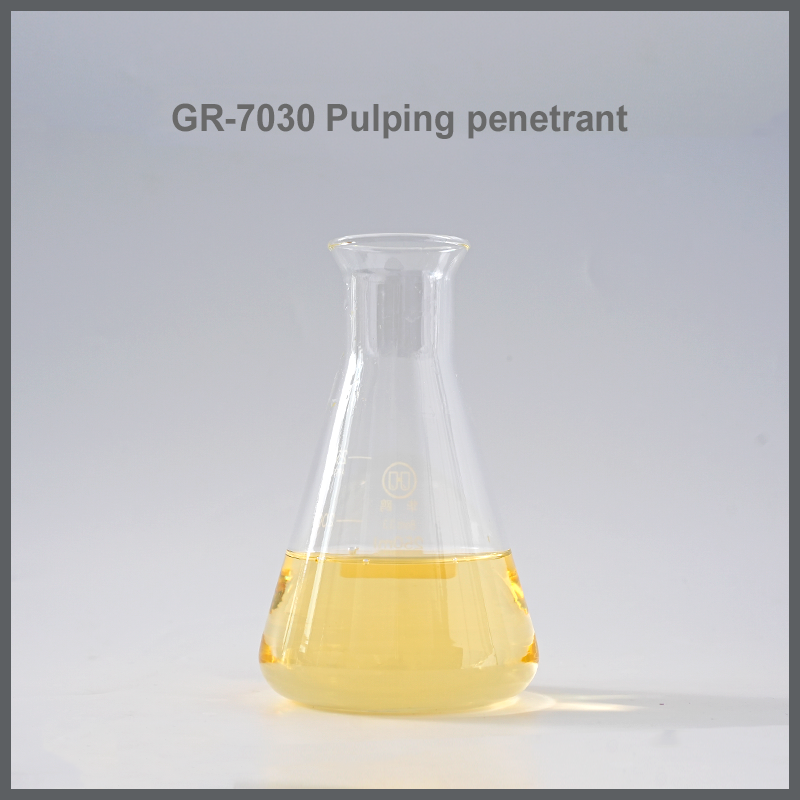products
GR-7030 pulping penetrant
The result is a more uniform and thorough cooking process, significantly improving the efficiency of lignin dissolution and hemicellulose hydrolysis, and more effectively dispersing and removing impurities such as resin. This not only improves the whiteness and cleanliness of the pulp, reducing the consumption of subsequent bleaching chemicals, but also aids in fiber softening and separation, ultimately achieving higher pulp yields, m

◼PRODUCT DESCRIPTION
Model GR-7030:
The pulping process is mainly to separate lignin, hemicellulose, resin, pigment and ash from cellulose as much as possible. In the pulping process, the wetting effect of the penet rant is used to
accelerate the penetration and uniform dispersion of the cooking aid and other additives on the cooking rawmate rials , so as to moreeffectively separate impurities, remove resin and separate fibers.
◼Main uses
The main component of this product is fatty alcohol polyoxyethylene ether surfactant, which can signifi cantly improvethe wettability, and make the surface more hydrophilic through multi-layer adsorption, increase the wettability and improve the permeability.

◼Features
Efficient Penetration: Rapidly reduces surface tension, promoting chemical penetration into the raw material.
Uniform Steaming: Evenly distributes cooking chemicals, preventing overcooking or undercooking in certain areas and improving cooking consistency.
Impurity Removal: Effectively promotes resin removal and pigment separation, reducing the pressure of subsequent washing, sorting, and bleaching.
Hydrophilic Modification: Adsorbs on the fiber surface, enhancing hydrophilicity and facilitating fiber separation.
Energy Saving and Consumption Reduction: Shortening steaming time or lowering steaming temperature helps reduce overall production costs.
◼Typical Applications
It is suitable for the cooking process of chemical pulp such as sulfate process and sulfite process, and is widely used in pulping production of various raw materials such as wood pulp, bamboo pulp, straw pulp, etc.


◼What is the main ingredient in this penetrant? Is it environmentally friendly?
This product's main ingredient is a biodegradable nonionic surfactant, fatty alcohol polyoxyethylene ether (AEO). It contains no harmful heavy metals or APEOs (alkylphenol polyoxyethylene ethers), meets modern environmental protection requirements, and is easily degraded in wastewater treatment systems, making it environmentally friendly.

◼Where is the penetrant added during the cooking process? What is the recommended dosage?
It is generally recommended to add it to the cooking liquor along with other chemicals (such as lye) during preparation. The specific addition point can be adjusted based on the factory's actual process flow. The recommended dosage is generally 0.05% to 0.3% of the absolute dry raw material. The optimal dosage should be determined through laboratory tests and production trials.

◼What practical benefits can be expected after using this product?
The expected benefits of this technology include:
1) faster chemical penetration, potentially shortening the cooking cycle;
2) improved pulp hardness uniformity and reduced Kappa number fluctuations;
3) reduced incidence of pitch obstruction;
4) a slight increase or stabilization in the final pulp yield, and improved cleanliness.
Overall, this will help improve production efficiency and economic benefits.

◼Is this product suitable for all types of pulping materials?
Yes, this product has excellent penetration into a wide range of plant fiber materials, including wood, bamboo, straw, and reeds. However, the degree of improvement may vary slightly for materials of varying density and properties, and we can provide specific recommendations.

◼How is the product packaged and stored?
This product is typically packaged in 200kg plastic drums or 1000kg IBC drums. Please store in a cool, well-ventilated warehouse, away from direct sunlight and freezing. The shelf life is generally 12 months.



Request a Quote
Related Recommendations







